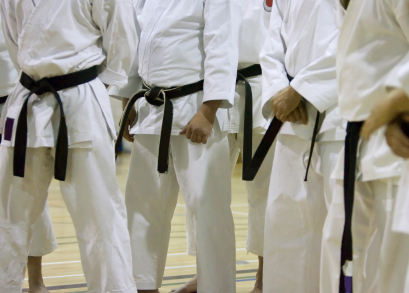As a derived style of Kajukenbo, we must look to their required kata to learn more about our syllabus. Traditional Emperado Method Kajukenbo uses Monkey Dance 13 and 14 as developmental kata. They teach moving footwork and stance work. They are simple yet vital foundational moves. In our style, we practice footwork with our Moving Blocking Sets – the Eight Point with half-moon steps for example. We practice stances in other drills and Kamuki kata too. There’s no need to add additional stance-only kata. We need to prune the unnecessary leaves to promote proper growth.

Secondly, Monkey Dance 11 is the Okinawan Kata Naihanchi 1. This kata was first taught by Grandmaster Mitose when he introduced Kenpo to the Hawai’i. It could be said that this is the first and only Kenpo kata. However, we can look to other systems and related styles to see what they do. Famous masters such as Chosei Motobu have two Naihanchi kata in their system. If it’s good enough for the Motobu family, it is good enough for us.
Therefore it seemed logical to include the second Naihanchi as Monkey Dance 14. It’s a beautiful kata and it teaches great techniques. This kata is very timely in the curriculum and challenging for Brown Belts. It also adds another kata with the traditional Mitose opening – something that I personally like and enjoy performing. Naihanchi 2 also acts as the capstone for the Monkey Dance or Palama kata series.
While we’re on the subject of Kata, I prefer to call the Kempo kata Kamuki. Calling something 1 Kata when all forms are kata is confusing for students and instructors alike. The Monkey Dances are called Palama by Kajukenbo in honor of the first YMCA program in Hawai’i. My inspiration for using Kamuki is it’s the second Kajukenbo YMCA location and its first initial is “K”. This helps me remember that it’s the equivalent of Kata. So Kamuki 1 is 1 Kata. Kamuki 2 is 2 Kata. Kamuki 3 is 3 Kata and so on. Less confusion once you get use to it.
Changes should not be made lightly but they are important. As the analogy previously mentioned, pruning is necessary to improve growth. Redundancy is important to emphasize key movements and techniques. More than that, it becomes a hindrance and leads the system to skew its character or effectiveness.
For instructors out there, what have you trimmed from the curriculum and why?



